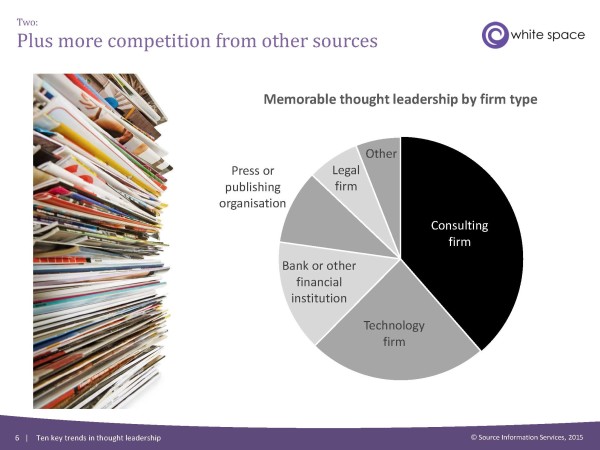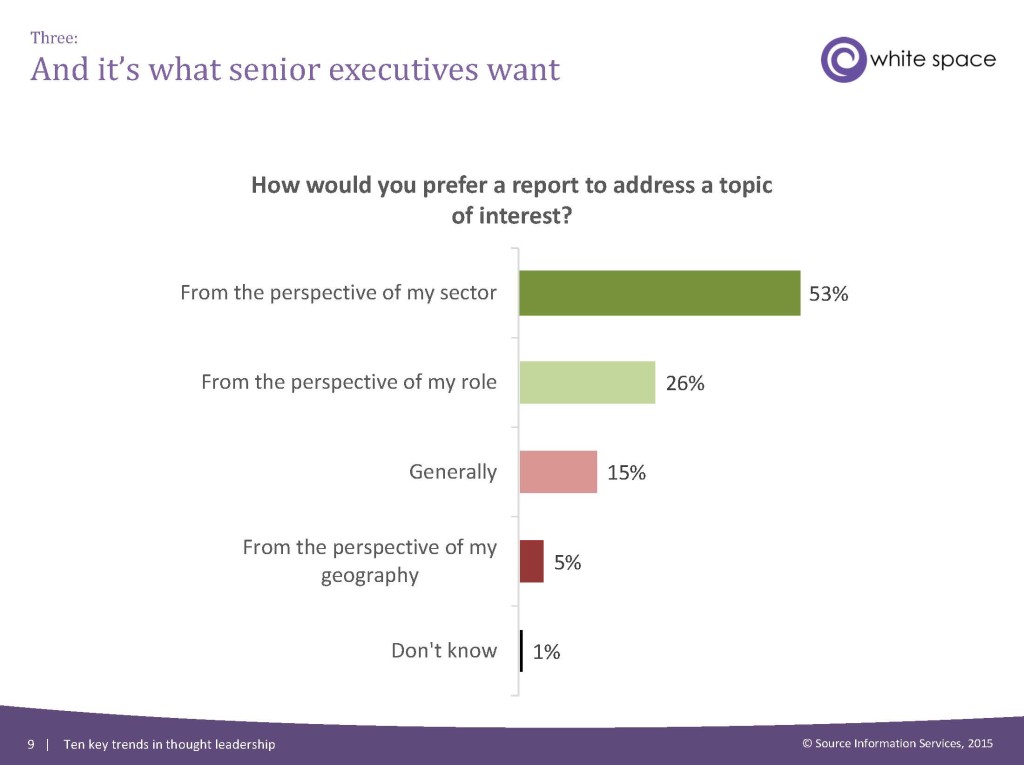How many times have you been disappointed in vendor-produced content? Do you contemptuously look at an analyst firm’s report thinking you know more about the subject than the author? Have you been embarrassed because your six-page study is clearly produced by marketing and not actual experts? These long-term problems are becoming even more common in the technology B2B world as content marketing becomes prevalent.
[av_button label=’GIVE ME CONTENT ADVICE TODAY’ link=’https://www.evolvedmedia.com/contact/’ link_target=’_blank’ size=’x-large’ position=’left’ icon_select=’yes’ icon=’ue83c’ font=’entypo-fontello’ color=’orange’ custom_bg=’fa8f00′ custom_font=’ffffff’ av_uid=’av-4lanum’]
This article does not deal with how to influence a purchasing. Instead, I am going to focus on what makes for a good piece of #thought leadership by expounding on what I learned at a recent seminar produced by White Space, a subscriber-based web service that analyzes thought leadership of around 30 leading global consulting firms. After listening to the presenters (Rachel Ainsworth and Zoe Stumpf) and talking to audience members, here are two takeaways for tech content producers are:
- Get experts involved with the actual content creation. Even if marketing is writing the content, have them base it on deep collaboration with your company’s experts.
- Industry-focused content is desired.
People may disagree with what thought leadership is, but I like Michael Brenner’s definition from a recent blog post:
A type of content marketing where you tap into the talent, experience, and passion inside your business, or from your community, to consistently answer the biggest questions on the minds of your target audience, on a particular topic…Thought leadership means you provide the best and deepest answers, to your customers’ biggest questions, in the formats your audience likes to consume.
Management consultants have to prove that they’re very smart and that they can help solve your problems. Their audience needs to think, “gosh, I should really call them because they’ll have the solution to my problem.” Unlike technology firms, they don’t have to tout their product’s specific functionality. However, many companies may not know they need a management consulting, so in many ways thought leadership aims to create demand for a specific service. For example, a 2011 McKinsey report about #big data did a great job towards convincing companies they needed to get ready for a data-driven world.
Tech companies are actually good at creating new markets through thought leadership. In fact a large percentage of executives that buy consulting services say technology firms create the most memorable thought leadership. Based on a Source for Consulting survey, a large percentage of executives that buy consulting services say technology firms create the most memorable thought leadership.

But what makes a piece memorable? If I cite a piece in my own writing or as validation for a business decision, then the report is definitely memorable. I personally like reports that have a shelf-life of more than a month or two. But just don’t take my word for it. Using White Space’s criteria, the quality of thought leadership content can be judged based on:
- Differentiation: Have others written about the subject? Does it say anything new?
- Appeal: Does it look good and is it easy to read?
- Resilience: Is there original, high quality qualitative or quantitative research?
- Prompting Action: Is there a clear next step?
What other lessons can we learn from the executives surveyed for these charts? We know that they primarily want content tailored to their specific industry. Although fewer people expressed the preference, there is also a demand for role-specific topics. This is similar to what I seen repeatedly in studies of tech buyer’s content preferences, they most often say they want peer-based content. However, those same studies do not say if the respondents view their peers to be from similar industries or if they are people with similar roles. Based on the chart below, I would focus less content that targets people based on their job title.

Reposted from Lawrence Hecht’s Lessons From Consulting’s Thought Leadership
Become a b2b tech content creation master
[av_button label=’GIVE ME CONTENT ADVICE TODAY’ link=’https://www.evolvedmedia.com/contact/’ link_target=’_blank’ size=’x-large’ position=’left’ icon_select=’yes’ icon=’ue83c’ font=’entypo-fontello’ color=’orange’ custom_bg=’fa8f00′ custom_font=’ffffff’ av_uid=’av-23rpm6′]








